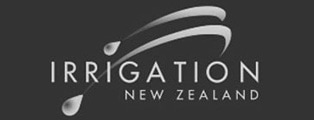
Irrigation co-operative Opuha Water Ltd says it will publish its quarterly water quality reports for Lake Opuha and the wider catchment to share with the community the results of the company’s extensive water quality monitoring program throughout its catchment.
“Opuha Water Ltd (OWL) has decided to take a more active role in encouraging community understanding of the many influences on these dynamic freshwater environments within our scheme area,” says Chief Executive Andrew Mockford. “Everyone cares about water quality, so we want to inform and involve our community in the work we do to understand and protect this vital, shared asset.”
“By publishing our quarterly water quality reports, we can show that Opuha is taking water quality management seriously. Agencies, such as Environment Canterbury publish their water quality test results. By doing likewise, Opuha hopes to demonstrate leadership in the district’s collective responsibility for protecting and improving the mauri (life force, vitality) of te taiao (the environment) in its catchment area.”
Mockford says a summary of its quarterly water quality report will be published on OWL’s website, with download links for people who want to see the full scientific document. Notices of the publication of new reports will be placed on the company’s Facebook page.
Water quality monitoring programs focus on Lake Opuha and its tributaries, the upper Opihi River and its tributaries, and the Opuha, lower Opihi, Te Ana Wai and Kakahu Rivers. Water samples are collected and analysed for a variety of different water quality and ecosystem parameters including nitrogen, phosphorus, chlorophyll-a, iron, manganese, heavy metals, pesticides, E. coli, cyanobacteria, water clarity, dissolved oxygen, and pH . River surveys for benthic periphyton (material attached to the surface of rocks in the water) are also carried out to better understand river health and quantify the coverage of cyanobacteria and nuisance algae.
OWL reviews the data on a monthly basis to identify any significant changes in water quality throughout the scheme and produces a quarterly report for shareholders, stakeholders and, now, the public.
“We will publish our water quality reports warts and all,” Mockford says.” “In Publishing these reports we hope to provide the community with additional insight into their water bodies. The aim is to collectively gain a greater level of understanding of our waterways and what influences their health. Our reports will detail where the water quality results are excellent, as well as where there are opportunities for improvement.
“We cannot be solely responsible for water quality; many factors are beyond our influence or control. But OWL is keen to demonstrate its role and actions in this important area and identify opportunities to work with community organisations on shared initiatives to lift and sustain the quality of our waterways.”
OWL’s first public water quality report covers two quarterly periods, June to August 2022, and September to December 2022.
Findings of interest include:
- Water clarity (turbidity) in Lake Opuha: Turbidity within the lake is typically low (i.e., clarity is high), regularly below 10 NTU and often less than 5 NTU.** However, in flood events, such as occurred in the lake catchment in mid-July and early-August 2022, increased inflows can cause a significant rise in turbidity as floods erode soils from land in the catchment. Lake turbidity was less than 5TU in early July and increased to more than 200 NTU during the flood event.
** NTU stands for Nephelometric Turbidity unit, i.e., the unit used to measure the turbidity of a waterway, which can be used to understand the presence of suspended particles in water. The higher the concentration of suspended particles in the water , the dirtier it looks, and the higher the turbidity is. Turbidity values less than 10 NTU are considered low, anything above 10 NTU is considered elevated and would most likely occur after heavy rain.
- Tributaries of Lake Opuha: Water quality monitoring is undertaken in the North Opuha and South Opuha Rivers; and Ribbonwood, Station, and Deep Creeks. The main water quality parameters of interest are nitrates and E.coli. Testing shows that nitrate toxicity generally sits in the A or B band, but can periodically spike during flood events when more water is flowing off surrounding land. OWL is undertaking studies to determine the sources of E.coli that influence recreation in Lake Opuha and to determine how long high E.coli levels persist in the lake. This will help OWL better communicate the risk associated with E.coli to water users following heavy rain. The company is also working to identify nitrate sources within the catchment.
- Te Ana Wai River: Generally, nitrate and E.coli levels in this river are well within safe levels, although flood events have resulted in temporary elevations of these measures.
- Kakahu River: Water Quality monitoring in the Kakahu River is undertaken monthly.
The main focus is on understanding the impact of OWL’s irrigation pipeline discharge into the Kakahu River, particularly E.coli and turbidity measures.
E.coli levels upstream of the discharge in the Kakahu River are higher than downstream of the discharge. This ‘dilution’ of E.coli levels means that the Kakahu River downstream of the discharge is given a ranking of ‘A’ for E.coli, compared with a ‘D’ for the river upstream of the discharge.
In the September – December 2022 period, increased water clarity monitoring occurred to ensure the discharge was within consent limits. The accumulated data is being examined to get a better understanding of how rainfall patterns affect the water clarity in the Opuha and the Kakahu Rivers.
Heavy metals and DDT: Sampling in 2022 showed an overall low level for heavy metals, with no public health or ecological concerns. No DDT was detected in samples taken from below the dam’s downstream weir in 2022. Sediment sampling in the Kakahu River for heavy metals showed low levels, indicating no ecological concern. Opuha Water has carried out this sampling due to unfounded and disproved accusations concerning these parameters. Independent testing and our own results show there is no concern around DDT or heavy metals in Lake Opuha.
Cyanobacteria: For the period June to December 2022, there was one cyanobacteria (blue-green algae) alert for Lake Opuha. This alert was issued in May 2022 and removed at the end of August 2022 (alert was in place for 94 days). Outside of the alert period, only low levels of cyanobacteria were detected in Lake Opuha. OWL carries out cyanobacteria monitoring and visual inspections to ensure the lake is safe for recreational use, and to identify if there is a risk of passing cyanobacteria downstream into the Opuha River. If high levels of cyanobacteria are detected, OWL notifies ECan, and ECan decides if an alert should be issued for the lake.
A copy of the reports can be viewed here



